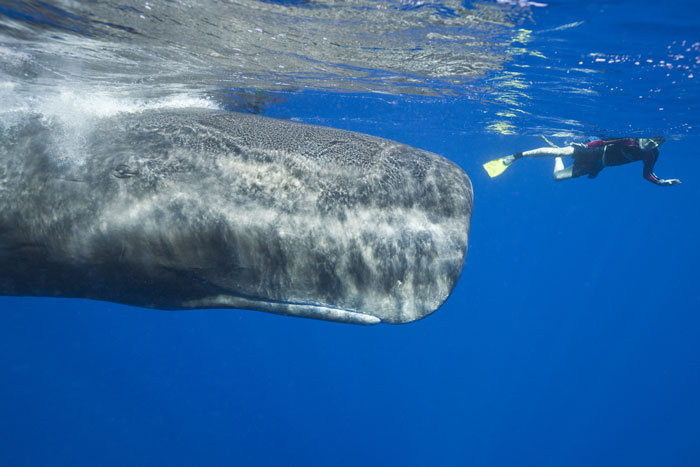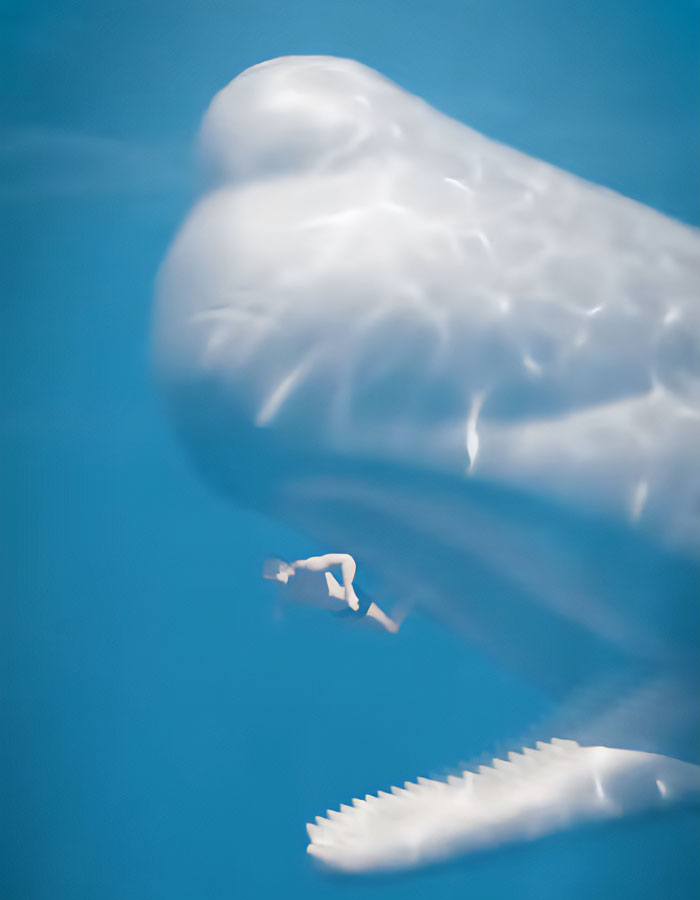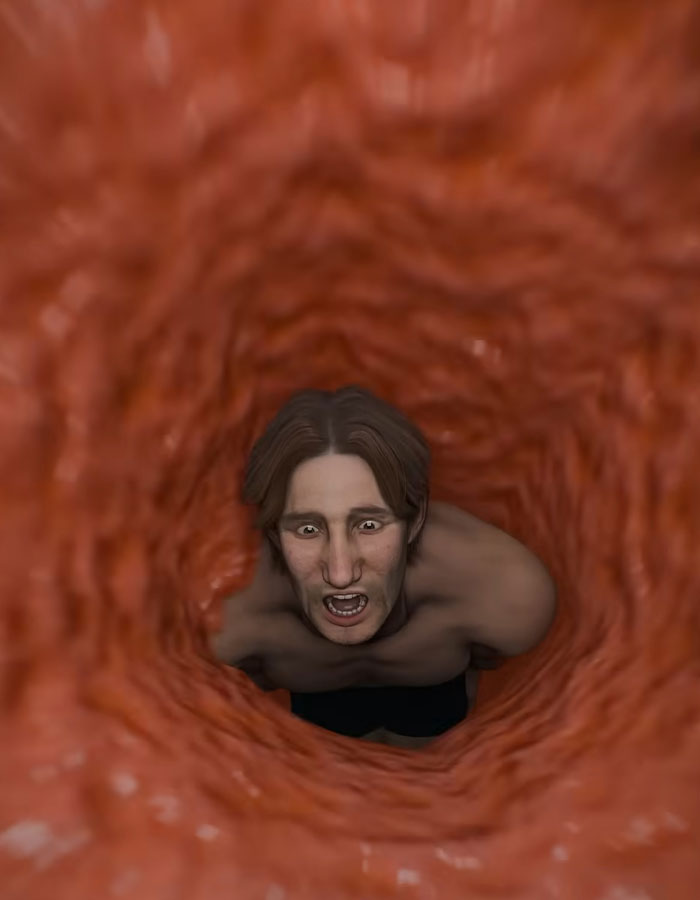The odds of being sucked into a whale’s mouth are one in a million. By nature, these mammals are very docile, and there has never been a true report of them eating a human.
But if, for some reason, awhalemistook a diver for an animal in their diet and swallowed them whole, the probability of survival would plummet to zero.
The animated short was released one month ago but has already amassed more than 40 million views, with users imagining the “completely pitch black” scenario as terrifying.
RELATED:
A human would be killed almost immediately upon entering their digestive tract

Image credits:ullstein bild / Getty
Once you’ve made it past the narrow pathway, gravity would take you down into a series of one of four stomach chambers, based on the anatomy of a sperm whale. Depending on thespecies, the number of chambers varies, but either way, you wouldn’t make it out of the first one alive.
Digestive acids can be found in the mammal’s stomach chambers, and the moment a human’s skin comes into contact with it, their entire body will start to break down and their skin will burn.
Anatomy-wise, only a sperm whale’s throat is big enough for a human to squeeze through

Image credits:Zack D. Films
The size of a whale’s throat varies, from the width of a basketball to a human fist, and most whales would not be able to swallow a person.
Under the right circumstances, however, the only species of whale that could swallow a human whole is the sperm whale.
With a regulardietof large prey, such as giant squid and octopus, their throats are relatively big. Although, this isn’t a cause for concern among humans.

Sperm whaleshave one of the widest global distributions of any marine mammal species, spanning from the equator to the edges of the Arctic and Antarctica. And because they only frequent depths of 2,000 feet or below, the likelihood of a human encountering a sperm whale is zero to none.
A sperm whale’s head can represent a third of their total body length, which can be up to 60 feet long. Their blowholes are also located on a slight diagonal on the left side of their heads.
People started posing hypothetical questions after the widespread story of a 19th-century tale

In 1891,James Bartleyof St. Louis, Missouri, came back home with a sensational story to tell.
This alleged incident unfolded in February 1891 about two hundred miles east of the Falkland Islands in the South Atlantic Ocean.
A whaling ship namedStar of the Eastwas on the lookout when a sperm whale was spotted about 3 miles away. The ship lowered two small boats, which later began to race with the whale.
When one of the crew leaned over to drive a weapon into the whale, it started thrashing, which sent the passengers on the smaller boats into the water. As the crew later looked to rescue the sailors, Bartley was missing.
After killing the whale and discovering that something was moving inside the mammal’s stomach, they cut the organ open, only to find Bartley, who had been inside for 15 hours. His skin was bleached a deathly white from its digestive juices, and the sailor was blind and had lost most of his hair.
But the young sailor had survived — something that should have been physically impossible.
Scientifically and historically, there isn’t an ounce of truth behind the tale

With the lack of air inside a whale’s body and its corrosive gastric acid, there is no way James Bartley, now referred to as “Modern Day Jonah,” could have made it out alive.
The answer is no. But if the museum believed it a possibility for 100 years, then it’s no surprise the media did, too.
Social media users either mentioned the old tale or joked that this information was very helpful

The Internet community was quick tocommenton the absurdity of the scenario.
One comment said, “I’m glad people are using technology to answer the important questions,” while another joked, “Going on past experiences, it’s nothing like this.”
Users online joked about the unlikeliness of this situation











 Lei RV
Lei RV
Renan Duarte
News